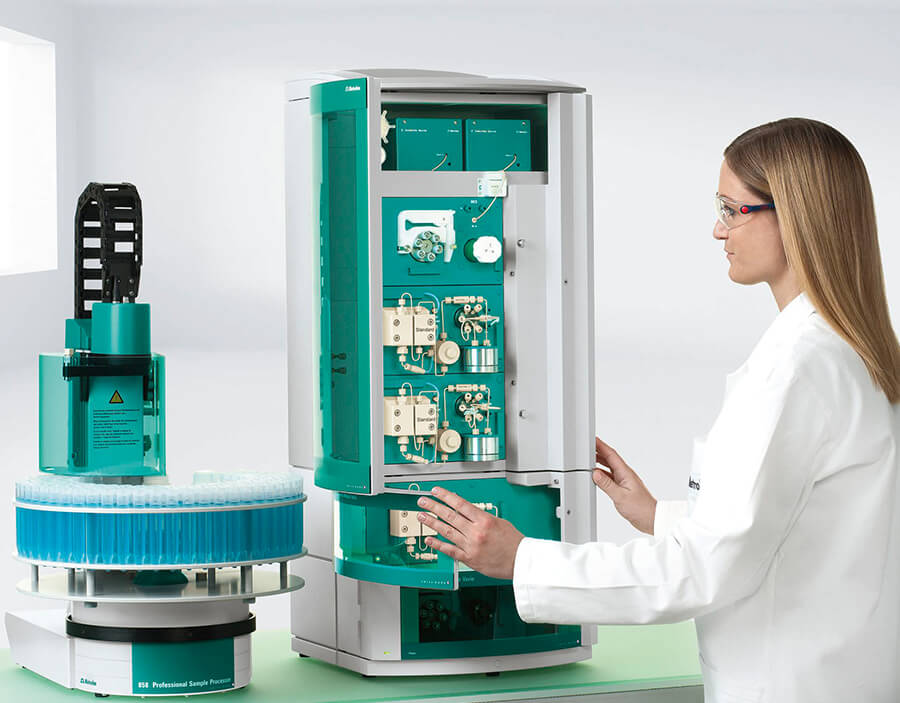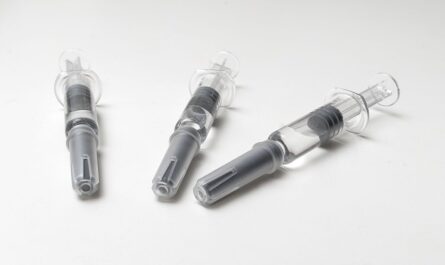Liquid scintillation analyzers have revolutionized the detection and measurement of radioactive elements dissolved or suspended in liquid solutions. By harnessing scintillation technology, these instruments provide a highly sensitive analytical technique for low-level radiation counting.
Principle of Operation
A Liquid Scintillation Analyzer works on the principle of scintillation. When radiation interacts with certain organic fluors or scintillators present in a sample, it produces flashes of light or scintillations. The analyzer contains two main components – a scintillation counter and associated electronics. The counter holds the sample vial containing the scintillator solution and radioactive tracer. Photomultiplier tubes in the counter convert light flashes into electrical pulses. The electronics analyze these pulses to determine the energy and amount of radiation emitted by the radioactive tracer. By mapping pulse characteristics, the analyzer can identify specific radioactive isotopes and provide highly accurate quantitative results.
Sample Preparation and Measurement
To use a liquid scintillation analyzer, the sample containing the radioactive isotope must be prepared appropriately. The isotope is dissolved or suspended in a scintillator cocktail – an organic solvent loaded with fluor and solubilizing agents. This ensures maximum absorption of radiation energy and light yield. The prepared sample vial is placed in the counter and measurement is started. As pulses are detected and analyzed over multiple counts, the machine calculates disintegrations per minute or other quantitative parameters of radioactivity in the sample. Cross-checks and quenching corrections further enhance result reliability.
Applications in Research and Industry
Liquid scintillation analyzers find widespread application in research, healthcare, pharmaceutical, food and environmental testing fields requiring low-level radioactivity measurements. Some key application areas are:
– Radiocarbon dating in archaeology and geology to determine the age of organic materials.
– Measurement of alpha, beta and gamma emitters in nuclear industry samples for safety and decommissioning.
– Radiotracer studies in biomedicine and life sciences to understand metabolic pathways.
– Detection of radioactive contamination in food, water and soil samples for environmental monitoring.
– Assay of radiolabeled drugs and compounds in pharmaceutical research and production.
– Verification of radiation dose received by personnel involved in nuclear activities.
Advantages over Alternative Techniques
Liquid scintillation counting offers certain advantages over gas-filled detector techniques for many applications:
– It allows analysis of almost any radionuclide that emits radiation, unlike proportional counters selective to only certain types.
– Quenching effects arising from color or chemical composition of samples can be corrected, enhancing accuracy.
– With sufficient sample preparation, detection limits in the sub-picocurie range can be achieved, 1-2 orders better than gas detectors.
– Isotope identification is possible based on distinctive pulse shapes for different radiations.
– Samples remain in solution, avoiding problems of plating out as solids in counters.
– Automated sample changers enable high throughput of large sample batches.
Technology Advancements
Continuous technology innovation is helping Liquid Scintillation Analyzer achieve new heights of sensitivity and versatility. Some key developments include:
– Improved photomultiplier tubes and associated electronics for higher light detection efficiency.
– Advances in fluor chemistry resulting in brighter, more stable scintillators suited for wider range of isotopes.
– Sophisticated pulse shape analysis algorithms for accurate isotope identification in complex mixtures.
– Autoranging and autoscaling features enable seamless measurement of samples over broad activity ranges.
– Larger sample capacities through higher efficiency sample changers and multi-detector systems.
– Integration with robotic liquid handling workstations for complete analyzer automation.
– Network connectivity and modular upgrade options facilitate remote operation and future upgrades.
Liquid scintillation analyzers have emerged as the preferred technology for numerous low-level radioisotope measurement applications due to their sensitivity, versatility and ability to accommodate diverse sample types. Continued instrumentation innovation will further expand capabilities for emerging areas like medical imaging, nuclear security and environmental monitoring. With enhanced features like higher throughput and multi-isotope analysis, these analyzers will play a vital role in enabling cutting-edge scientific research and industrial processes well into the future.
*Note:
1. Source: Coherent Market Insights, Public sources, Desk research
2. We have leveraged AI tools to mine information and compile it



